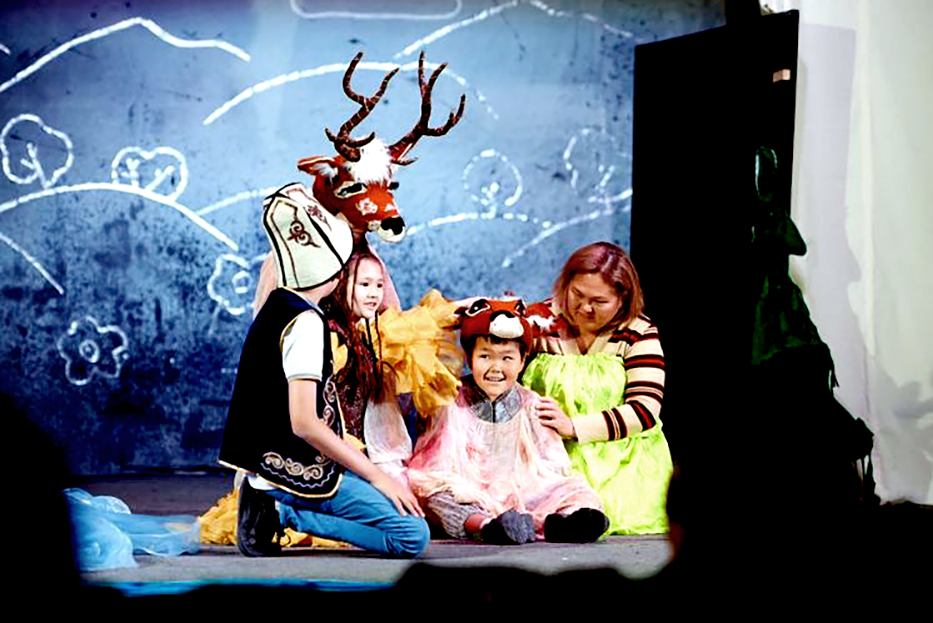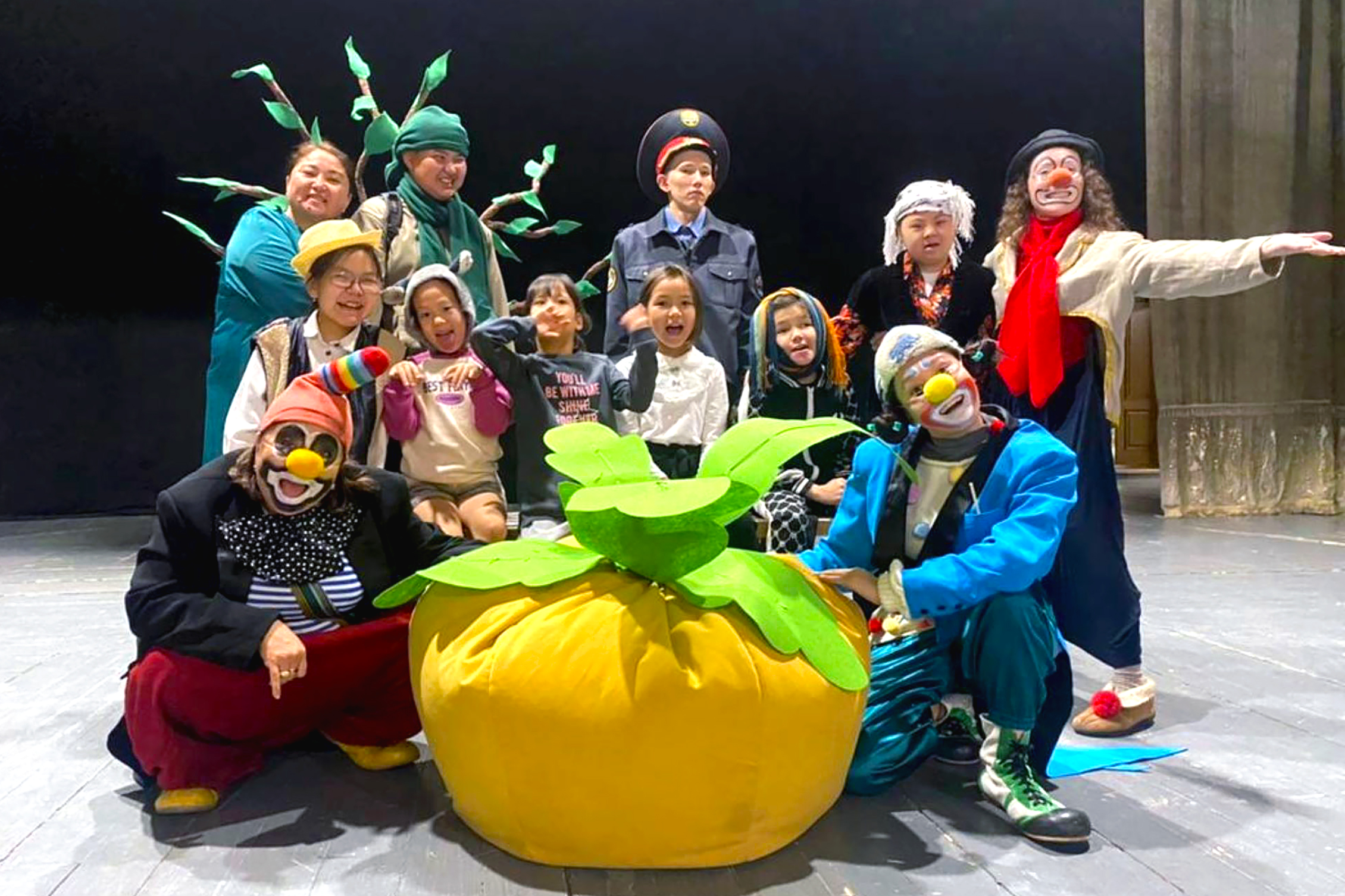Civil society organizations use inclusive theater to advance the rights of children with disabilities in Central Asia
Initiated by Association for Education Development (AED) Kyrgyzstan, inclusive theater is used to enhance the learning process for children with disabilities, to tackle the barriers that limit children and young people with disabilities' access to education and full social inclusion across Tajikistan, Moldova, Uzbekistan, Turkmenistan and Kazakhstan.
Children and young people with disabilities are often impacted by barriers that limit their access to education and full social inclusion. Many educational institutions lack infrastructure that accommodates their needs, such as accessible buildings, adapted curricula and qualified staff.
If they can attend school, traditional extracurricular activities frequently overlook the diverse needs of children with disabilities, leaving a gap in fostering creativity, communication and a sense of belonging. As a result, children with disabilities are not always included in school or in extracurricular activities.
Did you know that children and young people with disabilities are twice as likely to experience social isolation compared to their peers? A lack of opportunities to connect and express themselves often limits their personal growth and confidence and can result in low self-esteem.
This gap not only limits children’s potential but also perpetuates exclusion and inequality in society.

Inclusive theater as an advocacy tool for education
Inclusive theater can enhance the learning process for children with and without disabilities. By fostering communication, self-confidence and emotional resilience, theater helps students engage more effectively in their studies.
“Inclusive theater has given my child a chance to express themselves in ways I never imagined. Performing on stage, with peers both with and without disabilities, has not only boosted her confidence but also opened my eyes to the amazing potential in every person, no matter their challenges."
- Parent of an inclusive theater participant
Collaborative projects promote social integration, enabling children to build friendships and develop empathy. Participants learn how to work in a team, overcome barriers and form meaningful connections with their peers.
Inclusive theater also brings together participants, families and audiences to break down barriers, challenging stereotypes about disabilities and fostering a community where diversity is celebrated. It inspires students to advocate for inclusivity and pursue creative or community-focused careers, further promoting personal and social growth.
Educators also benefit from inclusive theater programs by gaining practical experience in implementing differentiated teaching strategies and fostering a supportive learning environment for all students, while students practice essential skills like reading, memorization and teamwork.
Through inclusive performances, theater offers a direct means of addressing the often-overlooked barriers disabled people face, advocating for their inclusion in all aspects of social, cultural, and professional life. It works to dismantle entrenched stereotypes and misconceptions by providing audiences with a first-hand, empathetic perspective on disability, illustrating the potential and achievements of disabled individuals.
Civil society collaboration helps scale inclusive theater from one to six countries
Recognizing inclusive theater’s transformative potential, National Education Coalitions and partners from Tajikistan, Moldova, Uzbekistan, Turkmenistan and Kazakhstan joined a collaborative learning effort initiated by Association for Education Development (AED) Kyrgyzstan in 2023, which is supported by Education Out Loud, GPE’s fund for advocacy and social accountability.
This enabled over 60 educators, social workers, psychologists, parents, volunteers and NGO representatives from the six countries to gain the knowledge and skills necessary to organize inclusive theater as a form of complementary education for children and young people with disabilities through training and the development of a shared methodological manual.
Beyond education, inclusive theater also serves as a vital advocacy tool, not only by raising awareness about the rights and capabilities of people with disabilities, but also by actively challenging societal norms and promoting systemic change.
As a result, in 2024, the inclusive theater studio was established at the Babur Osh State Academic Uzbek Music and Drama Theater in Kyrgyz Republic and presented its first production showcasing the potential of inclusive theater to unite and empower diverse participants.
The production involved school-aged children with disabilities, including those attending special needs schools and some that do not attend school at all. For the latter, this was their first experience of socialization. To support these children, family members were involved in the production.
In November 2024, an inclusive dance performance featuring the collaboration of young people with developmental disabilities alongside professional dancers from the "Lik Movement Theater" premiered in Tashkent.
The performance titled "АЛЫЕ ПАРУСА" (Scarlet Sails) highlighted the power of inclusive art to foster social connections and challenge stereotypes, promoting greater awareness of the rights and capabilities of individuals with disabilities.
Inclusive theater moving forward
The learning collaborative, led by AED Kyrgyzstan, exemplifies the power of partnership in driving meaningful change. Through these collaborations, inclusive theater has been recognized as a tool that not only raises awareness but also actively engages schools in removing barriers, allowing students with disabilities to fully participate in educational and cultural activities.
By uniting education coalitions and civil society organizations across Central Asia and beyond, this initiative has harnessed the strength of shared knowledge and diverse experiences.
The collaborative learning sessions have also served as a platform for NGO representatives to exchange experiences, learn from one another and acquire new knowledge. This peer learning approach not only enriches individual perspectives but also strengthens collective capacity, ensuring that best practices are shared and adapted to diverse contexts.
This article was originally posted on GPE's website. Read the original article here.
